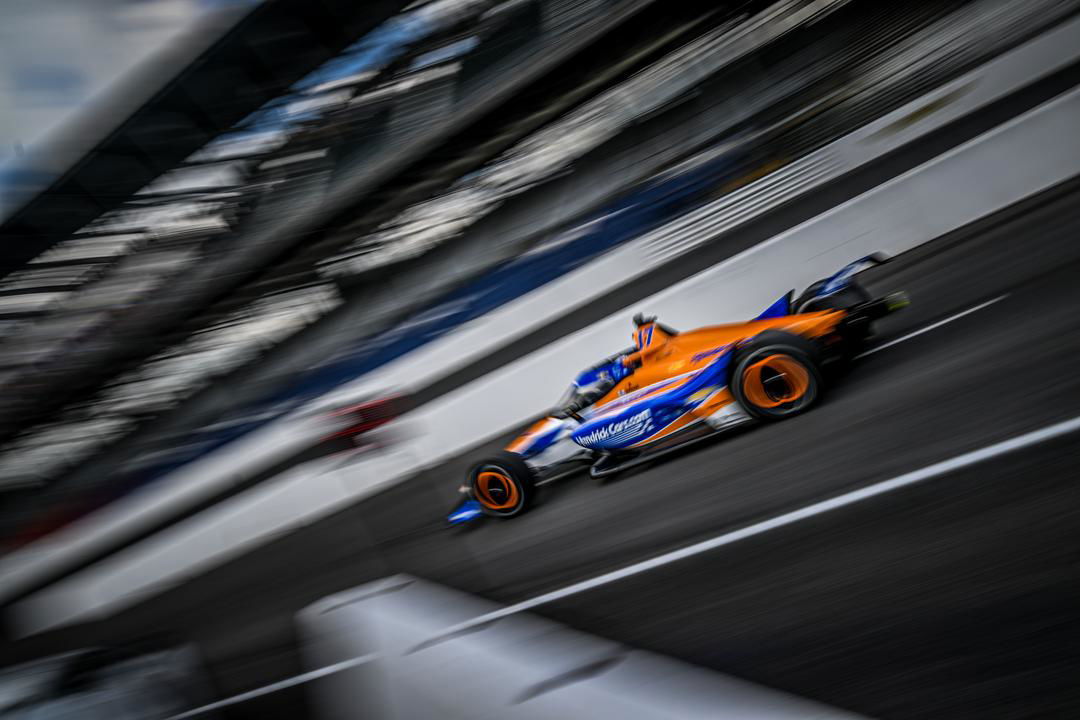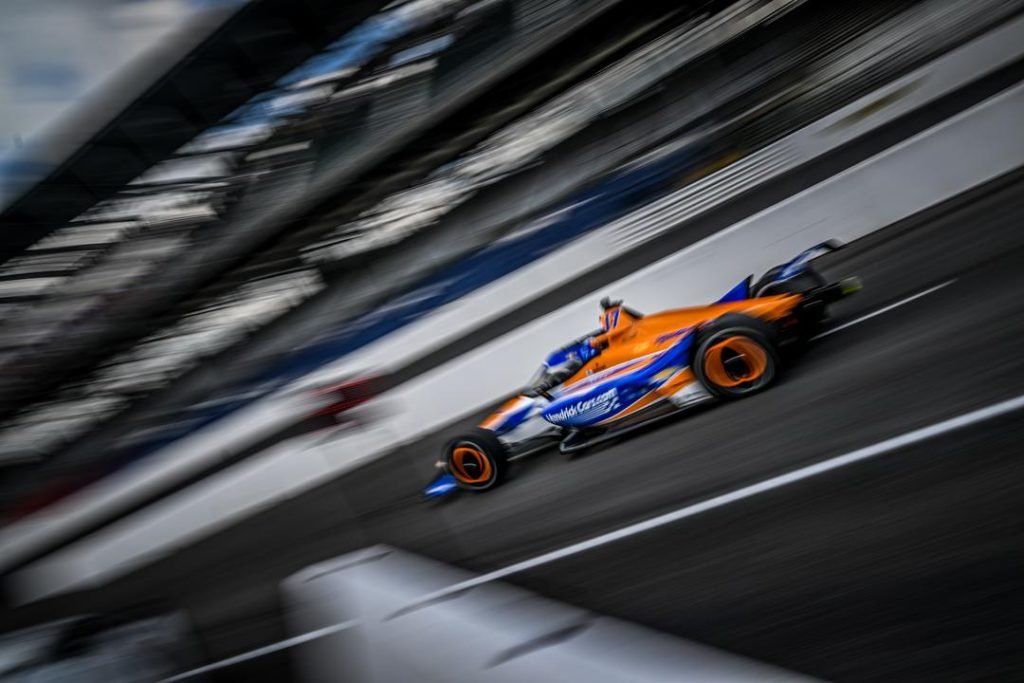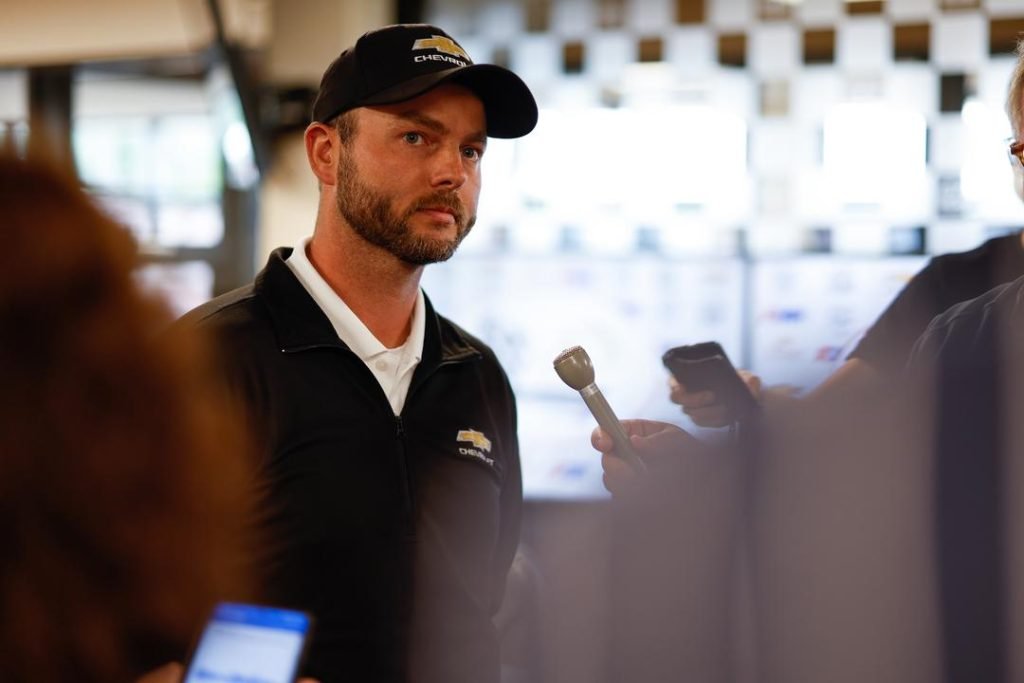

Bowtie teams dominated Day 1 Qualifications at The Brickyard, included a Team Penske sweep of the top three and McLaren’s Alexander Rossi in fourth, but there was also cause for concern in the Chevrolet camp.
While General Motors’ motorsport boss Jim Campbell was at pains to highlight that nine of its cars made the Fast 12 and all 16 are safely locked into the top 30, a plenum event likely cost Juncos Hollinger Racing’s Agustin Canapino a shot at pole position.
The Argentine looked like vaulting himself from 21st into the top 12 based on the speeds on his first two laps of a late run before the issue arose and he was waved off.
“As a manufacturer I will tell you we are pushing as hard as we can to give our drivers and teams the most horsepower and performance that we can possibly give them because that’s what you do at Indy,” said Campbell, Vice President of GM Performance and Motorsports.
“So we’re pressing hard, and you can see obviously we’re using the Indy 500-spec at 1.5 bar.
“There’s been no testing at 1.5 bar with the exception of some time on Friday; no testing prior to that at 1.5 bar.
“This is a weekend where you put the higher boost levels in and you’ve got to go.
“What I would say is, when you look at the Fast 12, super-proud that nine of the top 12 are Chevrolets, representing five of our six teams.
“We’re excited about that and what that can mean for tomorrow and going on to the Indy 500.
“As I said, we’re pushing as hard as we can, and we had six plenum events, on the 78 [Canapino], the 33 {Christian Rasmussen], the 24 [Conor Daly], the 20 [Ed Carpenter], the 5 [Pato O’Ward] and the 17 [Kyle Larson].
“The good news is, no harm to the engines – engines are strong and great – so that’s good.
“We obviously have put those drivers at a deficit when they’ve been trying to make their fast four laps.
“Our team is going to work here overnight, running in dynos [and] our dyno facilities around the world.
“We’re going to be running overnight, and then we’re working on ways to mitigate the issue and eliminate it, aero-proof it for tomorrow around controls and calibration.
“Obviously there’s some team strategy that will, as the ambient conditions are clear for tomorrow… We have the forecast, but as we get closer to it, there’s some decisions they can make, as well, so we’ll be working with them on that.”
A plenum event cost O’Ward a win at St Petersburg in 2023 and Rob Buckner, GM’s IndyCar Program Manager, confirmed that they have arisen in practice sessions from time to time also.

Indy 500 qualifying exposes them, though, and the problem became more frequent as the session rolled on.
Buckner admitted, “We don’t have a full understanding of why, but [we have] full confidence in our technical group, our partners at Ilmor, everyone at GM motorsports.
“We will figure it out, and we’ll learn from it, and we’ll come back with a better package.”
What they do know, however, is that the engines are less susceptible to plenum events when turned down to the race-spec boost level of 1.3 bar.
“We’ll wrap up tomorrow; big day, we’re focused on that, that’s our primary focus,” said Campbell.
“Monday, the teams will run the same engine at 1.3 bar, and Tuesday, Wednesday, Thursday, they’re switching to fresh engines, race engines. We’ll run at 1.3 bar.
“The incidence at 1.3 bar is much lower; not to say it would never happen, but much lower. Much lower.
“When we get to 1.3 bar, it’ll be a much smaller concern.
“But nonetheless, we don’t want any driver to be affected by it.”
Buckner also explained exactly how a ‘plenum event’, as it is more formally known, occurs.
“So on top of the cylinder heads in the air inlet system of the engine is a plenum, and there’s some port fuel injectors up there, so while these engines are sustained high speed, that plenum is very full of fuel,” he noted.
“If we have any event over a downshift that can ignore that fuel, it ends up evaporating the plenum of its fuel air charge, temperatures rise rapidly, and it pretty much… to the driver, it’s a perceived engine kill, and they vary in duration, they vary in severity.
“Unfortunately, here today, the ones we had were very noticeable to the drivers. Anything around Indianapolis is very noticeable to the drivers. It pretty much scrapped those runs, which we really hate for all those drivers that we impacted their day.”
Fortunately for O’Ward and Larson, they were able to bounce back and complete runs good enough for the Fast 12.
In the final minutes, Rinus VeeKay, whose #21 Ed Carpenter Racing entry was repaired after he crashed in his first qualifying attempt, dug deep to set a 232.419mph (374.042km/h) which elevated him from 29th to 11th.
Ryan Hunter-Reay hung on in 12th in a Dreyer & Reinbold Racing Chevrolet but the effort pushed Honda-powered Colton Herta (Andretti Global w/ Curb-Agajanian) out of contention for pole position with no chance to respond.
Pole Day action starts at 12:00 ET/02:00 AEST with Top 12 Practice followed immediately by Last Chance Practice.
Then, from 15:05 ET/05:05 AEST, it is Top 12 Qualifying, Last Chance Qualifying, and Fast Six Qualifying.





















Discussion about this post